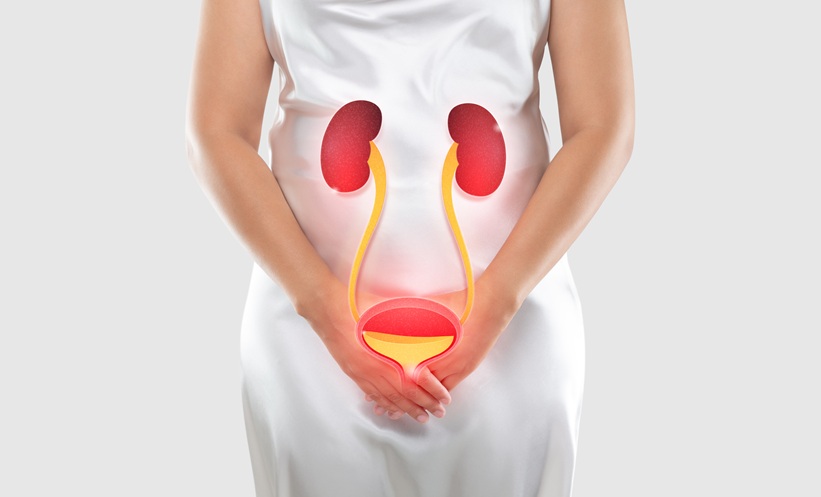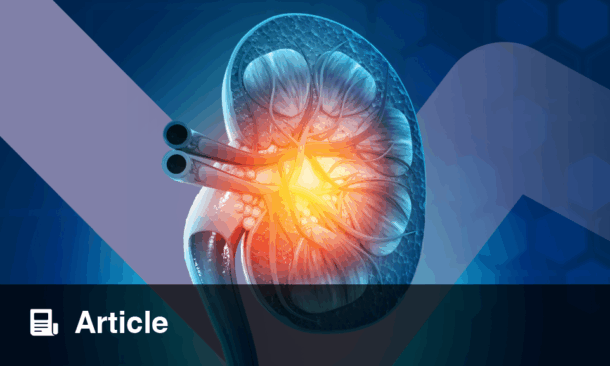‘Game Changers in Nephrology’ was the theme of the 62nd European Renal Association (ERA) Congress, held in Vienna, Austria, from the 4th–7th of June 2025. Known as the birthplace of modern medicine and a global capital of classical music, Vienna offered an inspiring setting for this year’s advances in renal care.
This year, the Congress saw its largest attendance to date, with over 9,800 delegates, and the highest ever number of submitted abstracts at 2,800, reflecting the growing momentum of innovation in the field. The scientific programme encompassed a wide range of sessions, with the main 12 tracks focusing on game changers in acute kidney injury, kidney vasculitis, chronic kidney disease, IgA nephropathy, and others, in line with the Congress theme.
Opening the ceremony, President Roser Torra addressed the audience with a call to the nephrology community to embrace exciting advances, such as the arrival of new therapeutics, AI, and a shift in focus from kidney failure to kidney health and prevention, all of which will transform patient care. Torra proudly noted her position as the first female president of ERA, inspiring the audience to continue breaking barriers and strive to equality in the “best specialty in the world’’. She emphasised that “at ERA, diversity, equity, and inclusion are not optional. They are mandatory.” In closing, Torra urged delegates to be ambitious in their mission, calling on the nephrology community to “boost nephrology beyond imagination” through innovation, collaboration, and compassion.
Together with Scientific Committee Chair Paola Romagnani, and Michael Rudnicki, President of the Austrian Society of Nephrology, Torra extended thanks to the Austrian Society of Nephrology, the organising committee, and the ERA staff for their invaluable contributions. Together, they encouraged delegates to seize the opportunity to learn, collaborate, and drive progress in nephrology.
The ceremony also celebrated outstanding contributions across clinical care, basic science, research excellence, societal service, sustainability, and the achievements of young investigators, recognising those who are shaping the present and future of nephrology. A spotlight was placed on ERA’s continued drive towards greener nephrology, with initiatives aimed at reducing dialysis-related environmental impact, and promoting climate-resilient solutions.
The ceremony concluded with an invitation to blend science with culture at the Sounds and Science concert, a unique event exploring the connections between music, medicine, and kidney health. The evening concluded with a memorable performance by the same ensemble, offering a taste of Vienna’s enduring role as a city where innovation and the arts go hand in hand.
Limited Renal Transplant Survival Advantage in Older/High-Risk Recipients
INSIGHTFUL findings from a large-scale study presented at the 62nd ERA Congress, which took place in Vienna, Austria, between the 4th–7th of June 2025, challenge the status quo regarding the survival advantage provided through deceased-donor renal transplantation.1
Utilising ERA Registry data from five European countries: Catalonia, Denmark, France, Norway, and the UK, the study reviewed 5-year survival outcome data for 64,013 adult patients who commenced dialysis between 2000–2019 and were on the waiting list for renal transplantation.
The study followed a target trial emulation framework, which imitates the structure of a randomised controlled trial. This allowed the study authors to compare the 5-year survival rates between those who received a renal transplant and those who continued dialysis but did not receive a renal transplant.
The researchers also looked at the survival rates amongst those who received standard-criteria donor kidneys (donors <60 years of age without significant risk factors for poor renal function), and those who received expanded-criteria donor kidneys (donors ≥60 years of age; or 50–59 years of age with at least two of the following: cerebrovascular cause of death, terminal serum creatinine of >133 mmol/L, or a history of hypertension).
The results showed that, for those who received a standard-criteria donor kidney, there was a consistent survival advantage, irrespective of recipient age or comorbidities. For those who did not receive a transplant, but remained on dialysis, the 5-year survival rate was 54%. In contrast, for recipients aged ≥75 years who received an expanded-criteria donor kidney, 5-year survival rates were only marginally higher than in those who didn’t receive a transplant and remained on dialysis, at 57–58%, especially in recipients with cardiovascular disease or kidneys from donors after circulatory death.
The researchers concluded that early post-transplant mortality is higher in those deemed as higher-risk recipients, and that the survival advantage of transplantation plateaus for those who are older or higher-risk, as they are more likely to receive expanded-criteria or circulatory death donor kidneys. They urge clinicians to have transparent conversations with older or higher-risk recipients about the uncertainty of benefit, but stress that the message is not ‘don’t transplant older people’.
Zigakibart Shows Long-Term Promise in IgA Nephropathy Treatment
NEW 100-week data from a Phase I/II trial presented at the 62nd ERA Congress suggest that zigakibart, an investigational anti-A PRoliferation-Inducing Ligand (APRIL) monoclonal antibody, may offer sustained disease control in patients with IgA nephropathy (IgAN), reinforcing its potential as a disease-modifying therapy.2
IgAN is the most common glomerular disease globally, and is a leading cause of chronic kidney disease, with half of affected individuals progressing to kidney failure. The disease is driven by the production of galactose-deficient IgA1 (Gd-IgA1), which triggers inflammation and progressive kidney damage. Zigakibart targets the APRIL pathway to reduce Gd-IgA1 levels and modify disease progression. The ADU-CL-19 trial enrolled 40 adults with biopsy-confirmed IgAN and persistent proteinuria despite optimised supportive care. Patients received intravenous or subcutaneous zigakibart every 2 weeks in addition to renin-angiotensin system inhibitors, unless they were renin-angiotensin system inhibitors-intolerant. The study assessed proteinuria, estimated glomerular filtration rate, serum Ig levels, and safety outcomes over 100 weeks.
By Week 100, proteinuria had decreased by 60% from baseline. More than half of patients (55%) achieved proteinuria <500 mg/24h, and 31% fell <300 mg/24h, indicating clinically meaningful remission. Notably, estimated glomerular filtration rate remained stable across all subgroups, including those with varying levels of proteinuria response. Zigakibart also produced a 74% reduction in IgA and Gd-IgA1, consistent with inhibition of the APRIL pathway.
Safety data were reassuring: most adverse events were mild or moderate, with no treatment-related serious infections or discontinuations reported. Infections were the most frequent adverse events, coinciding with a period of high COVID-19 circulation in trial countries.
This trial represents the longest reported duration of kidney function stabilisation with an anti-APRIL agent in IgAN. These findings support zigakibart’s potential as a cornerstone therapy, with Phase III studies now underway to evaluate efficacy in a broader population, and confirm long-term benefits.
Long-Term Kidney Function Patterns After Acute Kidney Injury
A MAJOR new study from the Netherlands, recently presented at the 62nd ERA Congress, has revealed striking differences in how patients recover kidney function following an episode of acute kidney injury (AKI), a condition that affects up to one in five hospitalised patients and is known to increase the risk of long-term kidney damage and death.3
Researchers at the University Medical Center Utrecht, the Netherlands, analysed health data from 567,527 individuals as part of the NOSTRADAMUS project, identifying 30,150 cases of AKI. Among these, 20,119 patients were followed for at least 1 year after their AKI event.
Using advanced modelling techniques, the team identified eight distinct long-term patterns, or ‘trajectories’ of kidney function: high stable estimated glomerular filtration rate (eGFR), low stable eGFR, rapidly increasing eGFR, moderately increasing eGFR, slowly increasing eGFR, rapidly decreasing eGFR, moderately decreasing eGFR, and slowly decreasing eGFR. The study found that certain patient characteristics, such as age, sex, ICU admission, and the duration and severity of AKI, were closely linked to these different trajectories.
Patients who had been in intensive care, or had prolonged or severe AKI, were more likely to experience declining kidney function. Conversely, younger patients and females were more often found in groups with improving kidney health. The trajectory profiles with the highest risk of death were: rapidly increasing, rapidly decreasing, and moderately decreasing eGFR.
These findings offer a vital step toward developing personalised follow-up care and early interventions for patients with AKI, potentially easing the burden on healthcare systems and improving long-term outcomes.
Genetic Variants Influence Blood Pressure Salt Response
A RECENT study, presented at the 62nd ERA Congress, has highlighted the role of genetic variations in influencing blood pressure (BP) response to a low-sodium diet among patients with mild essential hypertension.4
Sodium sensitivity of blood pressure, a condition in which BP fluctuates in response to sodium intake, affects nearly 30% of the population, and is linked to poorer long-term outcomes. To explore this, 618 untreated patients with hypertension, excluding those with obesity, undertook a 15-day low-sodium diet (<100 mEq/day) to assess compliance and BP variation.
Compliance was determined by a 24-hour urinary sodium excretion reduction of at least 40% from baseline, or a final value under 100 mmol/day. Out of the total cohort, 210 individuals (34%) met the compliance criteria, showing significantly lower sodium excretion than the noncompliant group, as well as greater reductions in systolic, diastolic, and mean BP.
Participants in the compliant group were further classified into three equal subgroups based on BP response: sodium sensitive, sodium resistant, and inverse sodium sensitive. The study investigated the effects of two specific gene variants, UMOD rs4238595 and NEDD4L rs4149601, known to influence sodium handling in the kidneys. Individuals carrying at least one A allele of the UMOD variant experienced a greater fall in systolic BP, with AA carriers showing the most significant decrease (–11.7 mmHg), compared to GG carriers (–3.5 mmHg). Similarly, A allele carriers of the NEDD4L variant exhibited stronger BP reductions, and 57% of those with the AA genotype were sodium sensitive, compared to just 23% of GG genotype individuals.
These findings suggest that genetic differences contribute to the variation in BP response to sodium restriction, and highlight the potential of using genotyping to tailor dietary interventions in hypertension management. A low sodium diet appears effective in a genetically susceptible subset, underlining the importance of personalised approaches to treatment.
New Data Shows Acute Kidney Injury from Diuresis in Patients with Acute Heart Failure Often Reversible and Low Risk
A NEW prospective study presented at the 62nd ERA Congress revealed fresh insights into acute kidney injury (AKI) in patients with acute heart failure (AHF) undergoing aggressive diuresis.5 The study aimed to clarify whether AKI observed during decongestive treatment represents true tubular injury, or primarily reflects functional or haemodynamic changes.
The cohort included 100 patients with AHF receiving aggressive diuresis, excluding those requiring inotropic support or dialysis. Serum creatinine and NGAL, a biomarker of tubular injury, were measured at admission and at serial time points over 72 hours. The occurrence of AKI was defined using KDIGO criteria, and patients were followed up at 30 days to assess readmissions and mortality.
AKI was observed in 37% of patients during hospitalisation. Interestingly, while 34% showed a rise in NGAL levels, there was no correlation between changes in NGAL and rising creatinine levels, suggesting minimal tubular injury even among those with AKI. Additionally, baseline NT-proBNP levels were significantly higher in patients who developed AKI (p=0.048), indicating greater heart failure severity in this subgroup.
Importantly, 73% of patients with AKI showed improved kidney function by 30 days post-admission, with lower serum creatinine compared to Day 3 values. Furthermore, the occurrence of AKI did not predict 30-day readmission rates or mortality, underscoring its limited short-term prognostic impact in this context.
In conclusion, this study suggests that AKI in patients with AHF receiving aggressive diuresis is often mild, and predominantly functional or haemodynamic in nature, rather than reflecting true kidney injury. These findings support continuing aggressive decongestive therapy without undue concern for mild AKI in this setting.
Mortality Trends in Self-Reported Chronic Kidney Disease
PRESENTED at the 62nd ERA Congress, a comprehensive national analysis based on the CDC’s NHANES database has revealed critical insights into the outcomes of patients with self-reported chronic kidney disease (CKD) across the USA between 2001–2020.6
Out of 51,743 participants analysed, representing an estimated 195 million USA residents, approximately 2.54% self-reported having CKD. The study, which linked NHANES data to the National Death Index, found a crude mortality rate of 10.3% over a follow-up period of up to 228 months. Notably, the cumulative mortality among patients with CKD reached 26.3% over 20 years, with cardiovascular disease as the leading cause of death, followed by cancer, diabetes, and kidney-specific disorders.
Stratified analysis revealed that mortality was significantly higher among males, non-Hispanic White and Black populations, veterans, USA-born citizens, and individuals of lower socioeconomic status. Education level, marital status, and having Medicare insurance were also linked to poorer survival.
Laboratory analysis using urinary albumin-to-creatinine ratio thresholds demonstrated diagnostic accuracies up to 87.6%, suggesting its utility in early detection.
Comorbidities such as heart failure, coronary artery disease, diabetes, hypertension, and COPD were strongly associated with increased mortality risk. These findings underscore the urgent need for public health strategies to address disparities in CKD awareness, prevention, and care, especially given that nearly 90% of individuals with CKD remain unaware of their condition.
Reducing Unnecessary Referrals: The SCREAM Project
FINDINGS from a retrospective observational study presented at the 62nd ERA Congress highlighted that transitioning to a risk-based model for referring patients with early-stage chronic kidney disease (CKD) to a nephrologist helps reduce unnecessary referrals, without increasing the number of missed cases of progressive kidney disease.7
Given the 2024 Kidney Disease: Improving Global Outcomes (KDIGO) guidelines’ recommendation to use a 5-year kidney failure risk of 3–5% as a criterion for nephrology referral, the study authors aimed to compare this recommendation based on the Kidney Failure Risk Equation (KFRE) with traditional referral models, including the clinical Swedish criteria and the classical 2012 KDIGO criteria.
The researchers analysed data from a healthcare utilisation cohort called the Stockholm CREAtinine Measurements (SCREAM) project. All adults with an estimated glomerular filtration rate <60 mL/min/1.73m2 who had albuminuria and creatinine measurements on the same date, or within <12 months apart, were included in the evaluation. This yielded a total of 887,388 repeated observations from 192,964 individuals.
The Non-North American 4-variable KFRE, which was recalibrated to better fit the author’s setting, displayed a good prediction performance. Both the Non-North American 4-variable and the SCREAM recalibrated KFREs showed higher specificity and sensitivity than the clinical Swedish and 2012 KDIGO criteria. Moreover, the KRFE-based models for referral exhibited higher positive predictive values, better net reclassification improvement, lower false positive rates, and better performance in decision curve analyses. Overall, the risk-based referral models could potentially reduce the number of unnecessary referrals of non-progressors by 23–25% compared with the traditional referral models.
The authors concluded that, within a large North European healthcare system, the transition to a risk-based referral model would help to reduce unnecessary referral rates, whilst keeping the number of missed cases of progressors low. In a time of increasing healthcare costs and burden on healthcare systems, analysis of referral models could help effectively improve how resources are used.
Better Outlook for Patients with Chronic Kidney Disease as Treatments Improve
NEW research presented at the 62nd ERA Congress shows that the outlook for people newly diagnosed with chronic kidney disease (CKD) in Denmark has improved over the last decade, likely due to the wider use of recommended treatments.8
CKD significantly increases the risk of heart disease, hospitalisation, kidney failure, and death, yet most patients are managed in primary care. Researchers aimed to analyse trends in treatment and outcomes in Danish adults diagnosed with CKD between 2011–2022, using data from national health registers. CKD was defined as two estimated glomerular filtration rate (eGFR) readings <60 mL/min/1.73 m² taken at least 90 days apart. The study excluded those with advanced kidney failure or previous low eGFR. Patients were followed until they reached a key outcome, such as heart attack, kidney failure, or death, or until the end of 2023. Statistical models adjusted for health and demographic factors were used to assess changes in risks and treatment patterns over time.
Among the 315,636 individuals included (median age: 79 years; 45% male), 71% had early-stage CKD with eGFR between 45–59. Over a median follow-up of 7.6 years, 1-year risks declined modestly for heart failure (p=0.02) and kidney disease progression (p=0.02), while changes in overall mortality, cardiovascular events, and composite outcomes were not statistically significant. Notably, the use of renin-angiotensin system inhibitors and sodium-glucose cotransporter-2 inhibitors, key guideline-based therapies, rose significantly (p=0.04 and p=0.08, respectively). However, there was no meaningful change in the use of lipid-lowering therapy, kidney biopsy rates, or referrals to specialist nephrology care.
The findings suggest that improvements in prescribing evidence-based therapies may be contributing to better cardio-renal outcomes for people with CKD. However, the authors note that certain aspects of care remain static, and they highlight the need to strengthen pathways for specialist involvement and comprehensive disease management.





